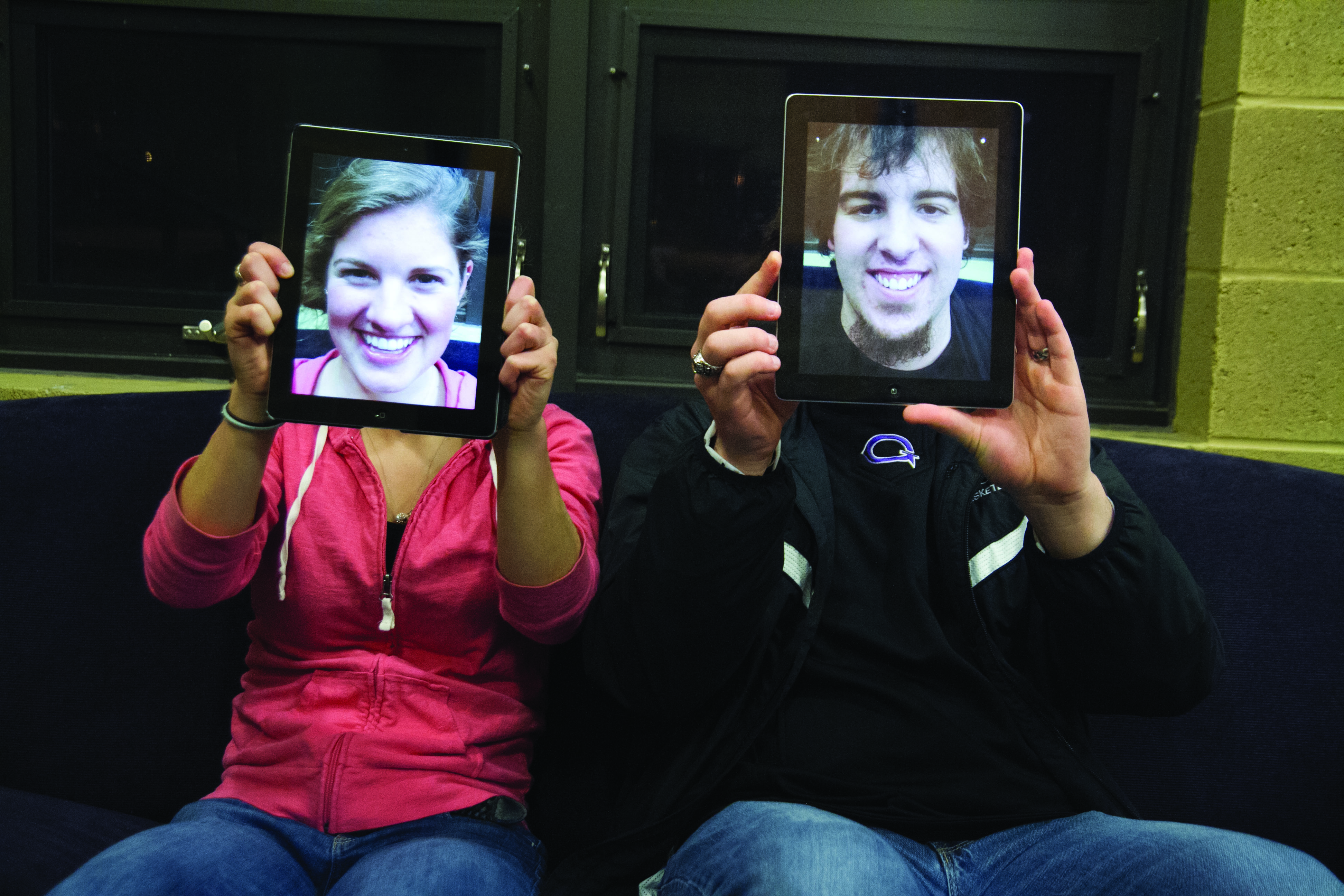It’s too early to make a definitive statement about the iPad initiative, but at this stage in the process I will share my experiences—both positive and negative.
One benefit to having an iPad is being able to check my email anytime; it creates ease with communicating with professors about last-minute questions or materials to bring to class. Going along with that, however, is the fact that the iPad creates some serious distractions. Take a look during chapel and I think you’ll find lots of Words with Friends and games of Flow going on. While the technology of iPads creates the ability for communication whenever and wherever, there is also the debate of whether it takes you away from the present.So is it an asset for class or a liability? I think the answer depends on the teacher and class. During Keith Graber Miller’s lectures it was helpful for me to have the PowerPoint pulled up on my iPad. That way, when he changed slides before I wrote key points, I could catch up by looking at my iPad. However, it is all too tempting to browse Imgur and Pinterest when I find myself slightly bored in classes that will remain nameless.
I may be the sole person who appreciates this, but I see the point of all this Mahara business that we are spending so much time on in my Learning Community course. Mahara is a web application for building electronic portfolios. If all goes according to plan, the ePortfolio will be a fantastic resource to show future employers that can be easily accessed wherever you go.
A problem I have with the iPad is the steep learning curve for all its capabilities. Ask anyone and they will tell you: I am horrible with technology. I just discovered that there is a way to set a passcode for the iPad and recently learned how to close apps in use. To say the least, I would be embarrassed if Michael Sherer knew my iPad intelligence (although I’m happy to report I haven’t fallen victim to the phishing scams yet).
So is this initiative a good or bad thing? I think good. It will start to make sense when more students have iPads, and hopefully professors will continue to find productive ways to incorporate the technology in class. The reality is that technology is moving forward and this initiative keeps us with the curve.
Emma Caskey is a first-year elementary education major.
In the fast-paced society that we live in, institutions and individuals are always looking for ways to implement the latest technology to keep up to speed. As such, Goshen College has equipped all first-year students with an iPad as part of their iCore technology initiative.
As a first-year and an iPad recipient, I have had very mixed emotions about the use of the iPad at Goshen College. There are undeniably some very beneficial elements that the iPad brings to the table. There are some very good apps that can help with the educational process. One of these that I have specifically had experience with is the Vernier Video Physics app. This app creates graphs of an object in motion that students have recorded on video. This use of the iPad has helped me to learn about the motion of objects and the forces acting upon them, which I am studying in my physics class.
While there are many benefits, like the physics app, there are also many ways that I think iPad usage has fallen short of its potential. One thing that I have had issues with has been typing things on my iPad. Microsoft Word on the iPad does not have many of the options that standard Word has, and this makes it very difficult to type anything. I always prefer to go to the computer lab to type papers because it is very inconvenient to do this work on my iPad.
I also think that one big problem that the students share concerning the iPads is our lack of awareness of the opportunities that the iPad presents. It would be very beneficial to have some type of session that teaches students about potential options they could explore with the iPad, because many of us didn’t know–and still don’t know–the many valuable ways it could be used.
Alex Mosbarger is a first-year broadcasting major.


